
How to Fix Dropping Engagement Rates in SaaS

by
Nov 6, 2024
Identify and convert your most valuable users
Sign Up
As a SaaS provider, you know that user engagement is the lifeblood of your business. When engagement rates drop, it’s more than just a metric—it’s a sign that users may be losing interest or even considering alternatives. So, what can you do to turn things around and keep your users engaged and coming back?
In this guide, we’ll walk you through why engagement might be dropping, how to uncover the root causes, and, most importantly, the practical steps to reignite interest and build lasting connections with your users. Let’s dive in and make engagement a priority again!
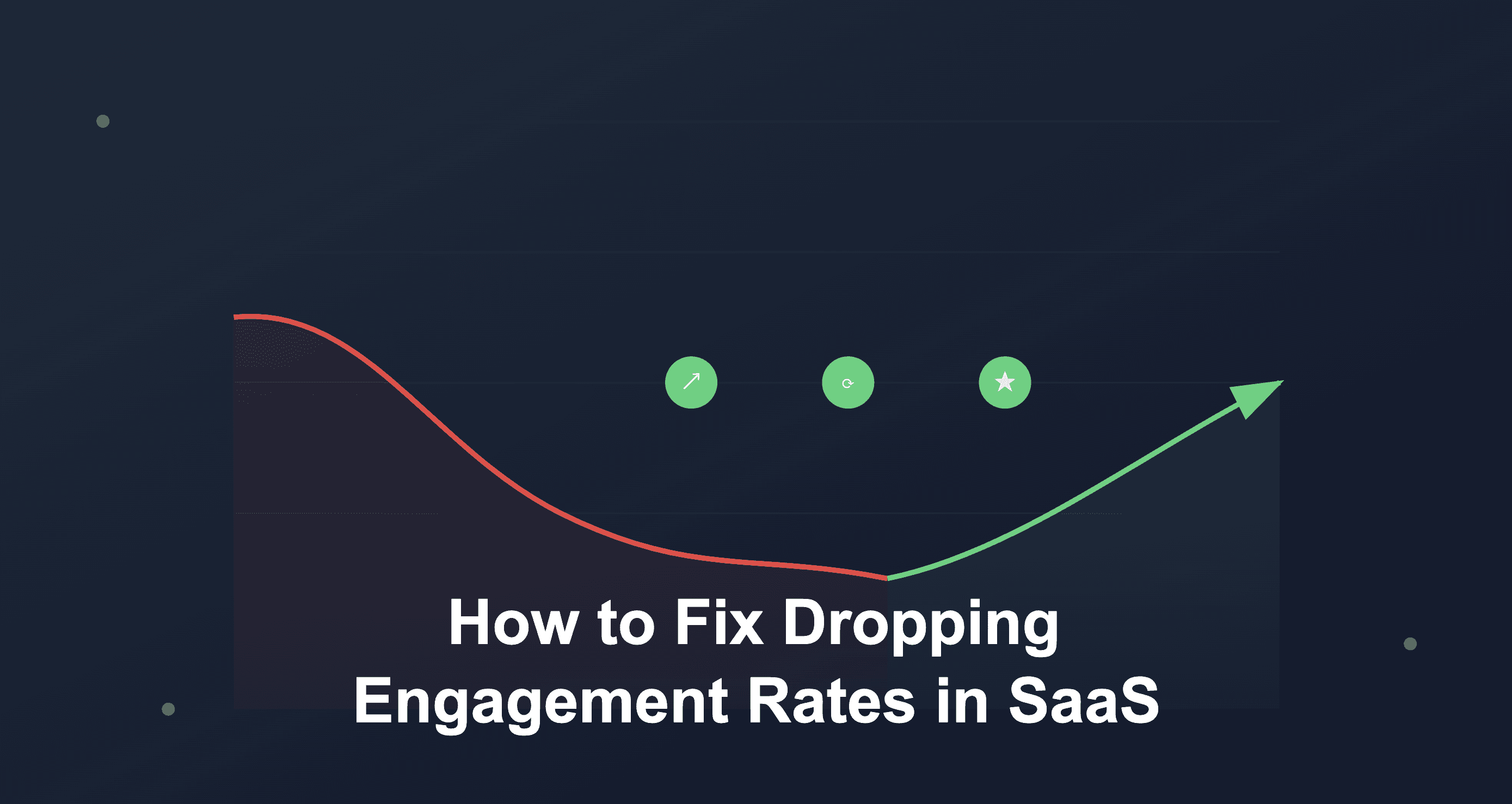
1. Why Engagement Drops
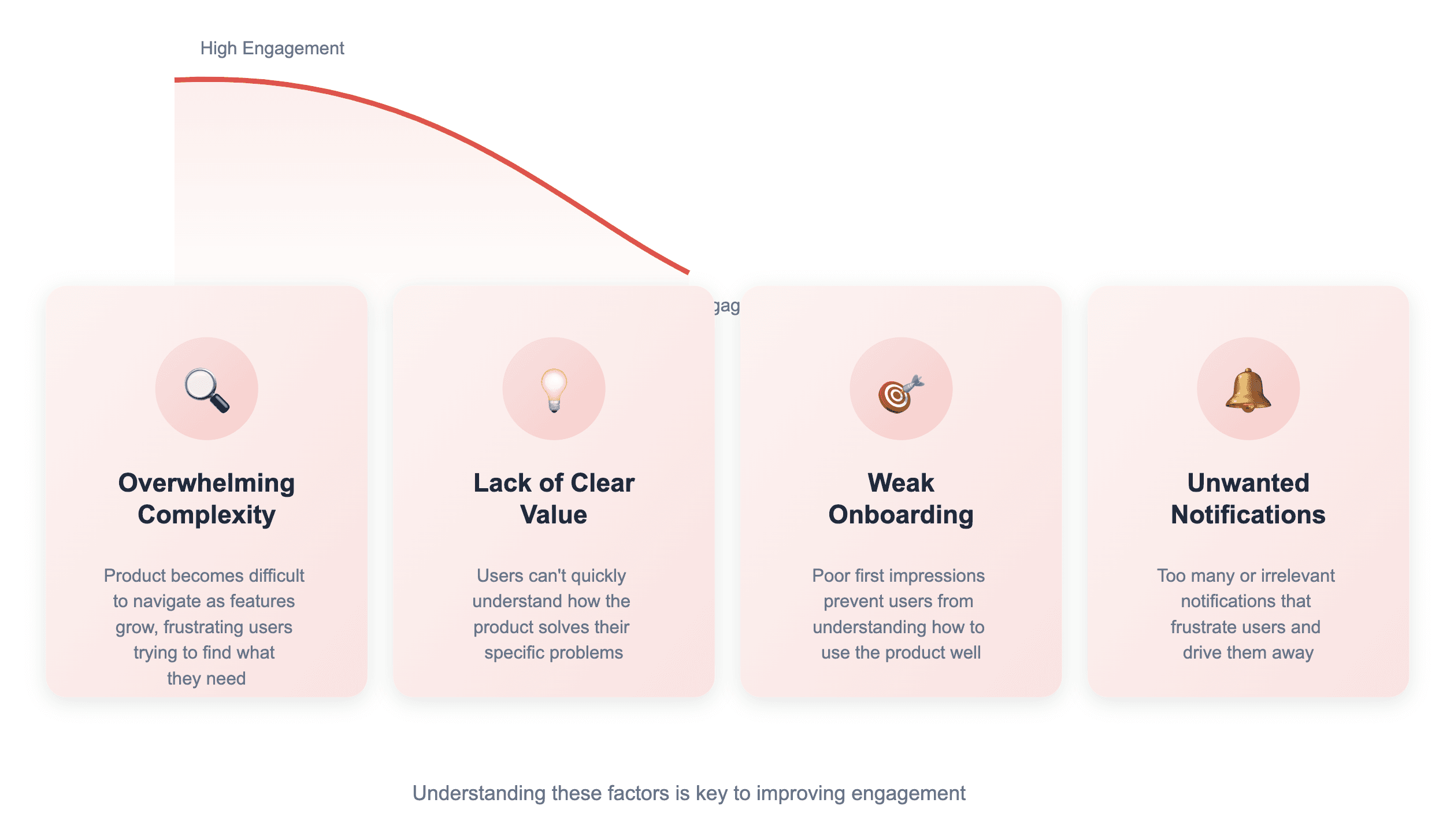
Before jumping into solutions, let’s break down what might be driving users away. When engagement drops, it’s usually due to one (or a combination) of these factors:
Overwhelming Complexity
Sometimes, products grow so quickly that they become difficult for users to navigate. If it’s hard for users to find what they need, they may lose interest and disengage.
Lack of Clear Value
When users can’t quickly understand how your product solves their problems, they may not stick around to find out.
An effective onboarding experience is like a first impression—without it, users might not understand how to make the most of your product.
Unwanted Notifications or Messages
Too many notifications, especially if they’re irrelevant, can frustrate users and drive them away.
2. Key Strategies to Re-Engage Users
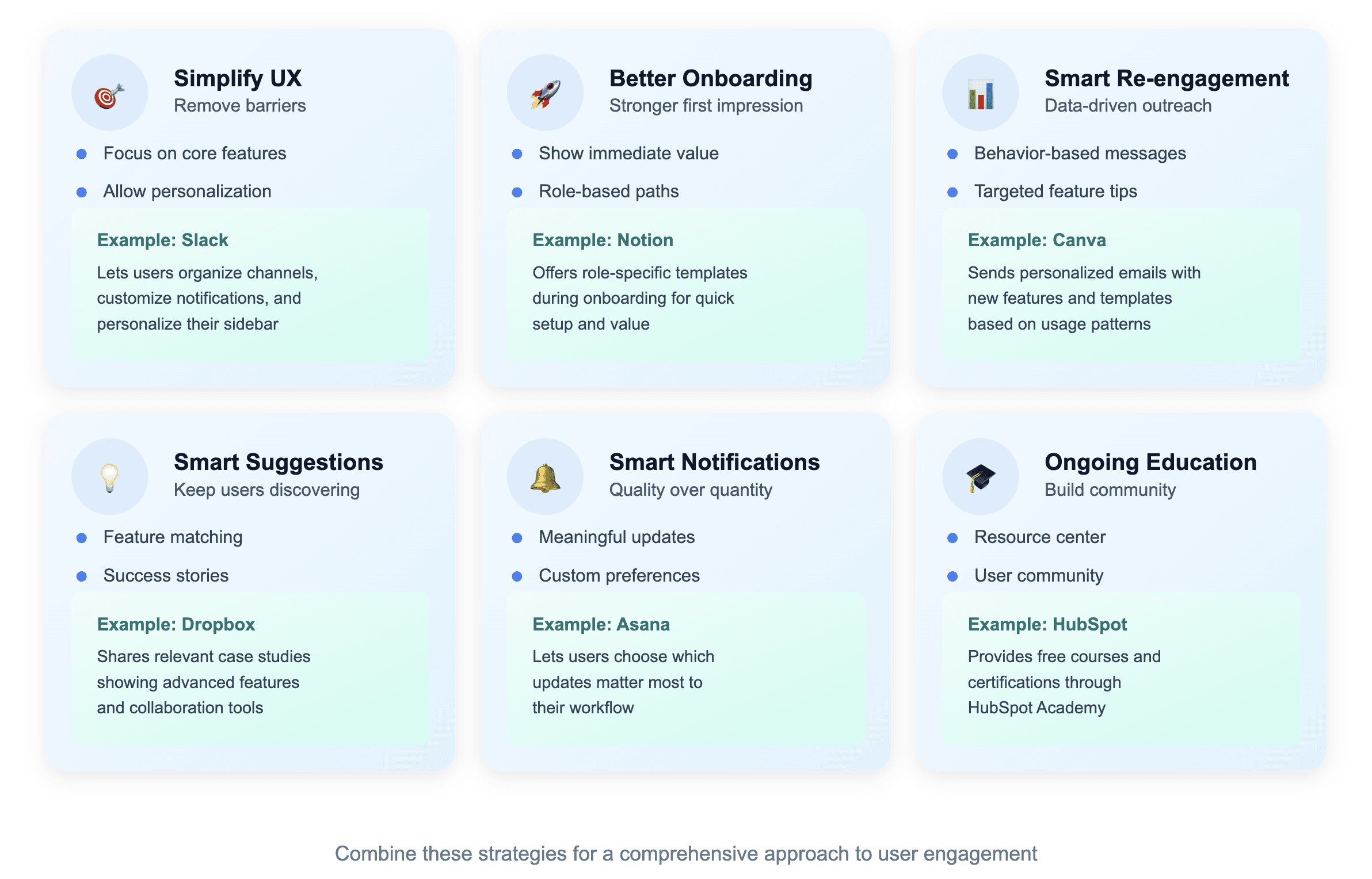
Now that we understand some common reasons for disengagement, let’s dive into actionable strategies to bring users back and keep them engaged.
Simplify the User Experience to Remove Barriers
Start with what matters most. Take a close look at your product’s core features. Do users primarily focus on one or two main features? If so, make sure those are easily accessible, and consider minimizing or reorganizing secondary features.
Allow users to personalize their interface. By letting users choose what features they see first, you make the experience feel more intuitive.
Example: Slack simplifies navigation by allowing users to organize channels, adjust notification settings, and tailor their sidebar. This puts users in control, making their experience more comfortable and focused.
Revamp Your Onboarding Process for a Stronger Start
Showcase the value of your product right away. Onboarding should highlight what makes your product essential. Use step-by-step guides or interactive tutorials to guide new users through key actions.
Offer role-based or goal-based onboarding. Not all users have the same needs. For example, if you serve both marketers and sales teams, consider designing tailored onboarding paths for each group.
Example: Notion offers templates for various use cases (e.g., project management, personal task tracking) right in the onboarding flow, making it easy for users to get started with the features they need.
Use Data-Driven Re-Engagement Campaigns
Personalize your outreach based on behavior. User data can help you see when someone might need a nudge. For instance, if someone hasn’t logged in for a while, send a friendly message reminding them of what they’re missing.
Send helpful tips to users who need it most. If a user hasn’t fully explored the product, send tips for specific features that would add value for them.
Example: Canva sends emails to users who haven’t logged in recently, offering tips for new design features or highlighting popular templates, which helps renew interest.
Personalize Product Recommendations to Keep Users Curious
Match features to specific user needs. As users engage, track which features they frequently use, and suggest related ones they haven’t tried yet.
Inspire users with examples from others. Showcase use cases or customer success stories relevant to their goals, giving users ideas on how to get more out of the product.
Example: Dropbox Business sends case studies to show how companies use collaborative features. This helps educate users on functions they may not have considered yet, keeping them curious and engaged.
Fine-Tune Your Notifications to Keep Users Informed, Not Annoyed
Send fewer but more meaningful notifications. Review your notifications to see if there are any that could be combined or eliminated. Aim for quality over quantity so that users stay tuned in rather than tuning out.
Let users adjust notification preferences. Offer flexibility so users can decide what types of notifications they want to receive, helping reduce frustration.
Example: Asana allows users to customize notification settings, choosing only the updates they care about. This keeps users informed without overwhelming them with notifications.
Invest in Continued Education and Community Building
Offer resources to deepen users’ understanding. Create a resource center with guides, tutorials, and webinars that help users learn advanced tips or optimize their workflows.
Build a community around your product. Communities give users a chance to connect with each other, share tips, and ask questions. This also reinforces their investment in your product.
Example: HubSpot Academy provides free courses that teach users how to make the most of the HubSpot platform. This ongoing educational approach keeps users coming back to learn and grow with the product.
3. How to Measure Success and Track Improvements in Engagement
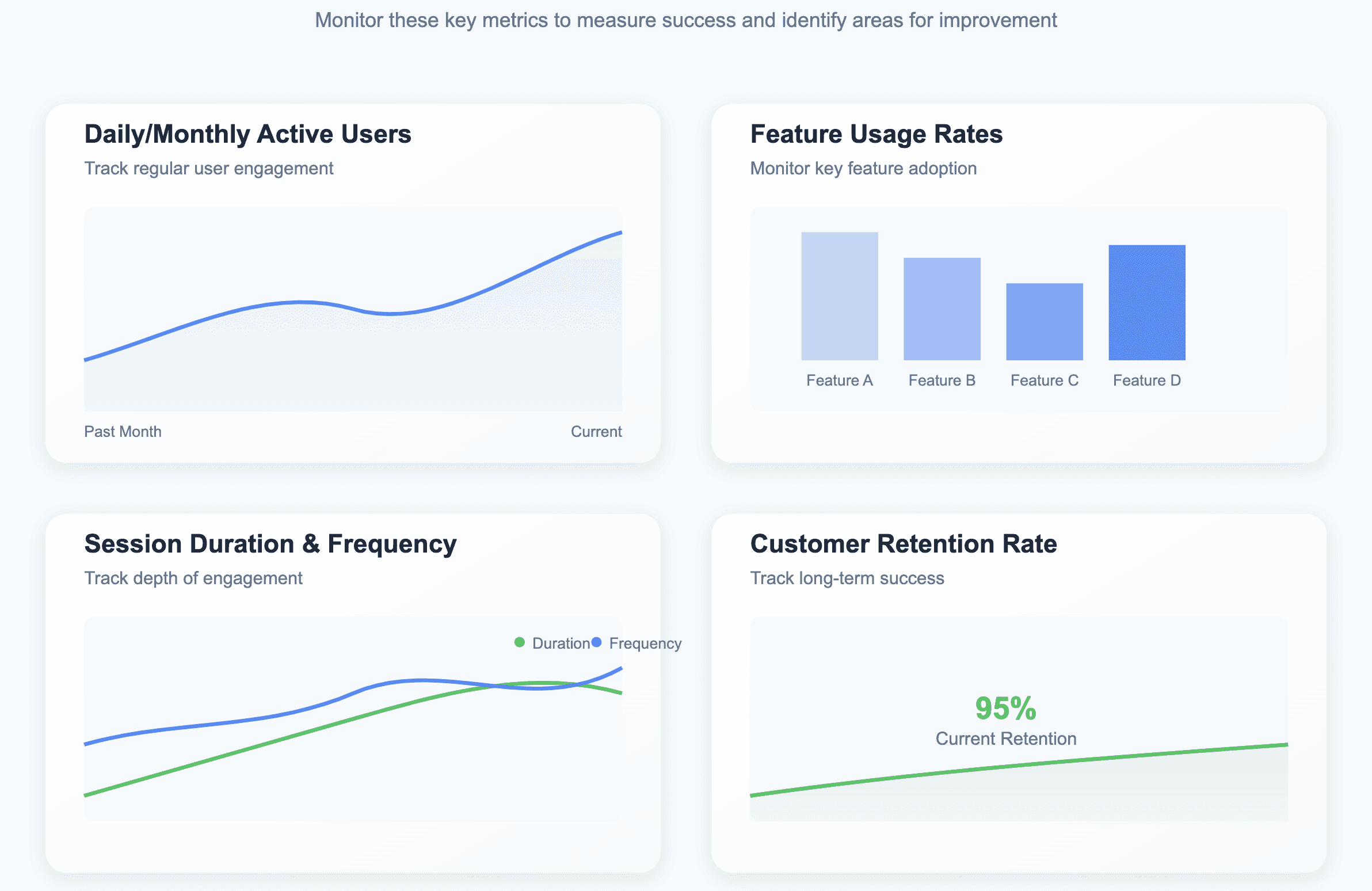
Putting these strategies in place is just the start. To understand if your efforts are working, monitor these metrics regularly:
Daily/Monthly Active Users (DAU/MAU): An upward trend here shows that more users are regularly engaging with your product.
Feature Usage Rates: See how frequently users interact with key features, especially those that were previously underutilized.
Session Duration and Frequency: Measure how long users spend in the product and how often they log in.
Customer Retention Rate: Improved engagement should lead to better retention, as engaged users are more likely to stick around.
Keeping an eye on these metrics will help you spot any continued challenges and adjust as needed to keep users happy and engaged.
4. Proactive Tips for Keeping Engagement High
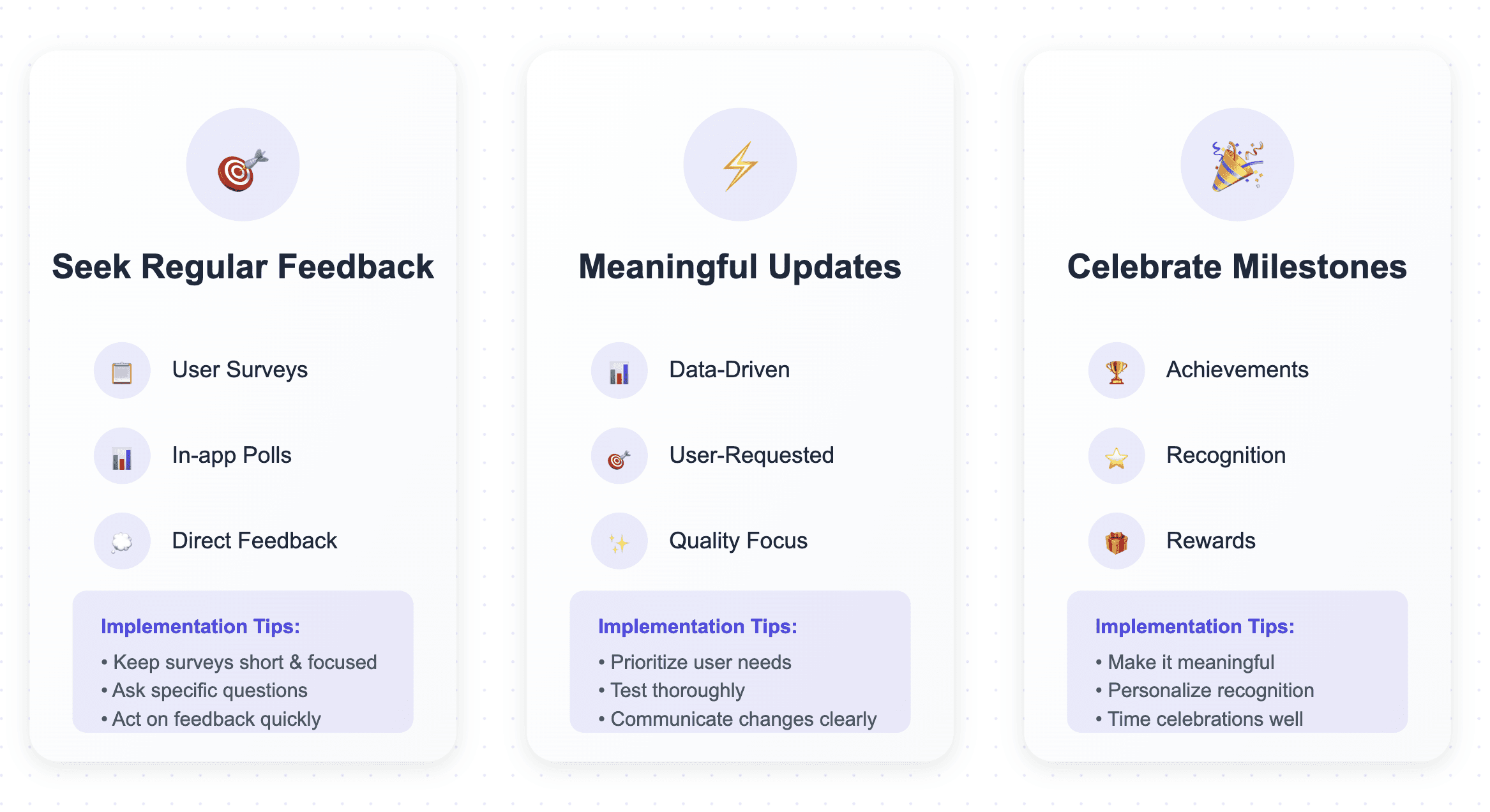
Restoring engagement is important, but keeping it high over time is the ultimate goal. Here are some proactive tips to ensure users stay engaged long after their first login:
Seek Regular Feedback from Users
Conduct surveys, send in-app polls, and create opportunities for users to share what they like or wish were different. Listening closely to user feedback helps you address issues early and strengthen product loyalty.
Roll Out Meaningful Product Updates
Keep your product fresh by adding features that users actually want, not just features that seem trendy. Use feedback and engagement data to prioritize improvements.
Celebrate Milestones and Successes with Users
When users reach key moments—like completing their first project or hitting a productivity milestone—celebrate their success. This kind of recognition builds a sense of accomplishment and loyalty.
Conclusion: Re-Engage and Retain for SaaS Success
A drop in engagement rates can be a real challenge, but it’s also an opportunity to better understand and meet your users’ needs. By identifying why users are disengaging and implementing targeted strategies to win them back, you can create a compelling and satisfying experience that keeps users engaged and connected to your SaaS product.
Engagement is a continuous journey. By staying responsive to users’ needs, evolving your product, and tracking success, you can keep users engaged long-term and prevent future declines. Embrace these steps, adapt as needed, and you’ll see engagement rates start to climb once more.




